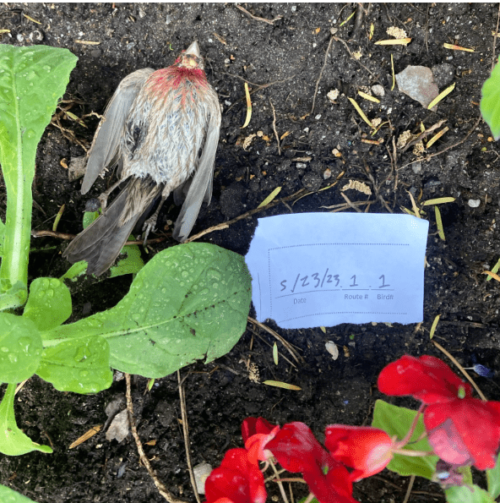Column: The value of community science
Imagine flying home at night and instead of finding darkness below, there are stars and the sky above is much darker than it should be. This is an experience that can be very disorienting for birds who mistake city light pollution for the stars they’re used to.
Birds have evolved to use celestial signs, such as the stars and sunrise, to help them navigate as they migrate. Two-thirds of birds migrate at night, which means when they fly over a big city abundant with light pollution, they can become confused because they are used to seeing light above them at night, not underneath them. This can result in bird collisions with tall buildings.
Every summer, students from USU’s Quinney College of Natural Resources have the opportunity to apply for exclusive internships to build experience. I’ve heard it said many times in QCNR that passing classes is only half of a natural resource degree. The knowledge gained in a summer internship is the other half that leads to more possible career opportunities.
During my first summer as an Aggie, I decided to apply for a conservation internship with Tracy Aviary in Salt Lake City. I’ve learned a lot about native Utah birds, but the most important thing I’ve realized is the power of community science.
Tracy Aviary organizes many community science projects with opportunities for volunteers to help fill the gaps in research. One example is the Salt Lake Avian Collision Surveys, or SLACS, which aims to understand what type of buildings pose a threat to migrating birds that use Utah as a flyway.
Unfortunately, there’s not enough research on collisions in Utah. But because of the community science initiative of SLACS, citizens can do quick surveys of certain blocks in Salt Lake City to find deceased birds, document them, and report back to conservation biologists.
After getting up at 6 a.m. and picking up my dad- who I cajoled into waking up three hours earlier than usual- we searched for and collected any birds that may have collided into a building. Afterwards we dropped the deceased avians off at the designated SLACS box- which is like a mailbox for dead birds.
This data is used to understand what types of buildings pose a threat to bird migration. So far, the data concludes that tall buildings with many illuminated glass windows are the biggest risk.
Some major cities have laws to protect migrating birds by requiring certain standards to be met when new buildings are constructed. Examples of helpful actions to take are using bird-safe glass, installing warmer-colored light bulbs, or shielding light downwards. Using automatic lights or simply turning them off at night can also have a huge impact on the avian population.
Tracy Aviary also installed nest boxes in the Alta Ski Area to keep track of which bird species are living on the land. Volunteers help with this community science project by checking the boxes once a week for bird activity.
To check nest boxes, citizens use a camera attached to a long stick to disturb the birds as little as possible. The nest type and eggs are then identified, giving insight into the species of birds and owls in the area.
Projects like these and many others would be impossible without the help of citizen scientists- there is simply too much ground to cover and not enough people within Tracy Aviary to do it alone. The Conservation Department is small but mighty, organizing these projects and interpreting the data found by volunteers.
Much of the work associated with participating in community science is outdoors, which can increase mental health.
For citizen scientists, knowing that their time is spent helping wildlife and the scientific community can be very rewarding. Many scientific breakthroughs would be impossible without the help of everyday citizens who want to make a difference.
I have found that many people don’t realize that they have the opportunity to help with community science projects within their daily work routine. Many of the store owners and cleaning crew employees who work in Salt Lake City remove deceased birds from the streets in the mornings as part of their jobs. These people could be very beneficial to the SLACS project without changing their routine by contributing the findings they are already making to the data pool.
I urge anyone passionate about science to do some quick research and find out what community science projects are happening nearby. There’s a chance that the perfect project for your work and home life could pop up.
Citizen science projects draw people in who have a passion for change, and this often builds a network of friendships that strengthens the morale of Utah’s community as a whole.

